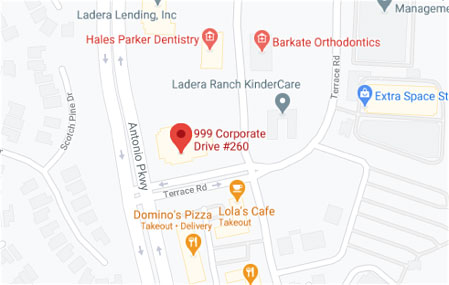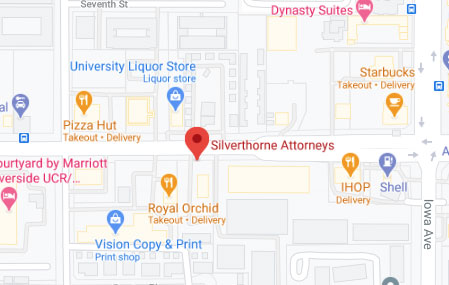What is It? The Science Behind Campylobacter
Campylobacter is the most common cause of foodborne illnesses in the United States and one of the leading perpetrators of gastrointestinal infections worldwide. It is generally difficult to trace due to the sporadic nature of the infection. Despite its commonness, infections are usually isolated incidents. It is a spiral shaped organism that can cause disease in humans and animals. Most human illnesses care caused by one very specific strain; Campylobacter jejuni. This strain is responsible for approximately 845,000 reported illnesses in the U.S..
Campylobacter is a very fragile bacteria that grows best in 98.6-107° Fahrenheit; the approximate body temperature of a bird. The bacteria cannot tolerate drying out and grows in places where oxygen is not present in the atmosphere. Freezing greatly reduces the amount of bacteria on raw meat. It takes less than 500 organisms to make one person sick. For instance, one small drop of juice from raw meat can infect one person. Infections are due to improperly prepared and undercooked poultry, cross contamination between uncooked meats and cooked meats, or cross contamination with vegetables. If proper sanitation practices are not put into place, campylobacter from raw poultry will greatly effect other foods.
Where is it Found?
Campylobacter jejuni is commonly found in fowl (i.e. ducks, chickens, etc.), as well as many other wild and domestic animals. These bacteria are found to inhabit the intestinal tract of warm-blooded animals. Though the majority of cases the bacteria was most common in chickens and chicken by-products. Many chicken flocks have the infection, but show no signs of symptoms. Nearly 88% of chicken carcasses have campylobacter. Campylobacter is not a discriminatory illness. There is evidence where investigators find campylobacter in foods with labels such as “organic” and “free range.” The food/poultry that is to be consumed is contaminated when it comes into contact with animal feces which is known as a fecally contaminated meat surface.
Common Symptoms of Campylobacter
We will discuss in further detail the incubation period for campylobacter. Traditionally common symptoms tend to occur within 2-5 days. Some of the most common symptoms include the following:
- Diarrhea;
- mild to severe with evidence of blood in the stool
- fever;
- nausea;
- vomiting;
- headache;
- muscle pain
Studies show that there are three age groups that are likely effected:
- children under 5;
- young adults from 15-29;
- older persons in their mid to late 60’s and older
Long Term Serious Complications of Campylobacter
Throughout studies of the campylobacter jejuni illness, there are cases where people contract more serious complications. A variety of these complications are due to how the body fights the bacteria. Some of these more serious and documented complications include the following:
Guillain-Barré Syndrome (GBS)
Guillain-Barré syndrome, or as we will refer to it as GBS, is an autoimmune disorder of the peripheral nervous system. It occurs when the antibodies that the body naturally builds up in order to fight campylobacter attack the nervous system. GBS calls on the slow shut down of the nervous system and in more severe cases can lead to paralysis. The first case was in 1982 when a 45-year-old man saw a diagnosis of GBS with irreversible neurological damage two weeks after campylobacter jejuni gastroenteritis – intestinal infection with symptoms involving diarrhea, cramps, nausea, vomiting, fever, etc..
GBS and Campylobacter
It is likely that campylobacter triggers 40% of all GBS cases and the onset of GBS symptoms begins several weeks after diarrheal illness occurs. The statistics shows that 1 in every 1,000 campylobacter cases results in GBS and approximately 2/3 of GBS patients report having had campylobacter jejuni infections as the triggering agent. That is to say when campylobacter jejune triggers an onset of GBS, the outcome in more severe. Often resulting in quadriplegia in some patients that may require ventilator support within 24-48 hours of onset. With a more severe diagnosis, this means that the recovery period will take longer. Some reports indicate that those with GBS after campylobacter were unable to walk without assistance up to 6 months to one year after the onset of the disease. Oftentimes patients who contract GBS from campylobacter never fully recover.
Short Incubation Periods
Though the “typical” incubation period for campylobacter is between 2-5 days, an article out of Australia finds that there was an outbreak from duck liver that had an incubation period of just 2 hours. According to the study done by The Australian Government Department of Heath, it was discovered that there was indeed a case of short incubation periods in campylobacter outbreaks. A study from 2013 states that 33 out of 50 guests at a wedding reception report suffering from gastroenteritis. According to the study, the median incubation period for 17 of 30 guests who completed the testing was 24 hours with an overall range of 2-60 hours incubation period. Twelve of the 17 cases reported symptoms of illness less than 24 hours after consuming the contaminated food.
Testing Samples
One fecal sample from a patient came back positive for campylobacter jejuni. After investigating, tests came back with evidence that the only significant association with the illness was the consumption of the duck liver parfait entree. Upon further testing, investigators were able to confirm that the duck liver plate was at a maximum internal temperature of 158°F, which is far less than the 165°F that kills hazardous bacteria. It is interesting to note, in this study, experts were able to prove that it is possible for a short incubation period with campylobacter jejuni. It had been previously stated that it was “nearly impossible” for incubation periods of this bacteria to be less than 24 hours.
Short Incubation – Findings
The incubation period for the first confirmed case was available for 9 outbreaks; 4 of which had reported an incubation period of less than 24 hours. The review of each case clearly indicates that “short incubation periods are a common feature of campylobacter outbreaks in poultry liver dishes.” A review and study of 10 of 14 outbreaks indicates that an incubation period of less than one day is plausible. Also stating that the shortest incubation period being 0.1 days.
In this study, it was found that due to the high levels of campylobacter present in liver, it is possible that the individuals suffering from the food borne illness have shorter incubation periods due to a large dose of bacteria. Incubation periods can be shorter due to body chemistry. If a person’s metabolism or nervous system are already fragile, they are likely to experience shorter incubation periods. The New Zealand and Australia Health Departments noted, it not uncommon to identify cases with short incubation periods (less than 24 hours) in campylobacter. Investigators should not discount gastroenteritis cases with short incubation periods when poultry is the culprit. As is evidence from the previous cases, campylobacter symptoms can often take less than 24 hours to appear.
Limitations in Studies
Like with most things, there were some limitations when it came to these studies. The CDC notes that the study above is subject to some bias due. Investigations into the outbreak did not take place until 35 days after the event. Another limitation is due to the fact that some guests did not participate in the study; so it is unlikely to determine whether or not they got sick and if they got sick from the duck liver entree. Incubation periods of campylobacter outbreaks in association with other foods were not ready for review during this study.
Though campylobacter jejuni is one of the most common forms of food poisoning, it is important to note that the complications can range from “normal” food poisoning symptoms to much worse. It is also important to note that it is possible to contract campylobacter in just a few hours after consuming contaminated food.
Sources:
- Durrheim, David N; Hope, Kristy G; Merritt, Tony D. “Short Incubation Periods in Campylobacter Outbreaks Associated with Poultry Liver Dishes.” Australian Government Department of Health. Commonwealth of Australia. 1 Mar. 2014. Web. https://www.cdc.gov/foodsafety/diseases/campylobacter/
- Horn, B.J. “Eurosurveillance, Volume 18, Issue 40.” Eurosurveillance. Institute of Environmental Science and Research. 03. Oct. 2013. Web. http://www.eurosurveillance.org/ViewArticle.aspx?ArticleId=20602
- Javid, Mahmud. “Campylobacter Infections Clinical Presentation. Medscape. WebMD. 20 May, 2016. Web. http://emedicine.medscape.com/article/213720-clinical
- “Infectious Disease, Campylobacter.” CDC Centers for Disease Control and Prevention. U.S. Department of Health & Human Services. 3 June. 2014. Web. https://www.cdc.gov/foodsafety/diseases/campylobacter/
- “Campylobacter: Fact Sheet.” World Health Organization. World Health Organization. December 2016. Web. http://www.who.int/mediacentre/factsheets/fs255/en/












